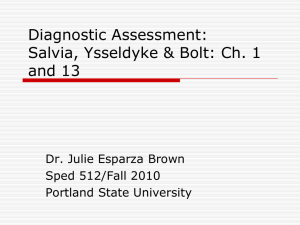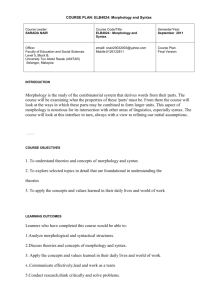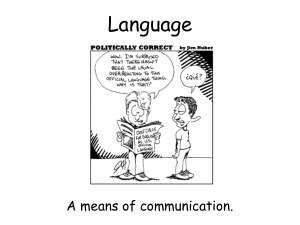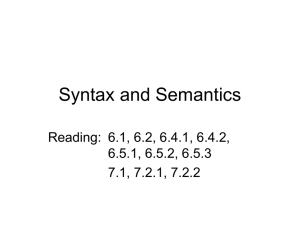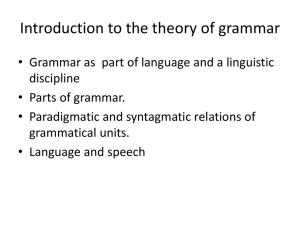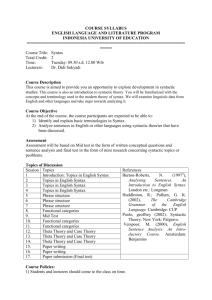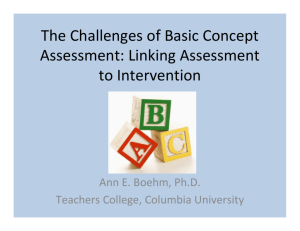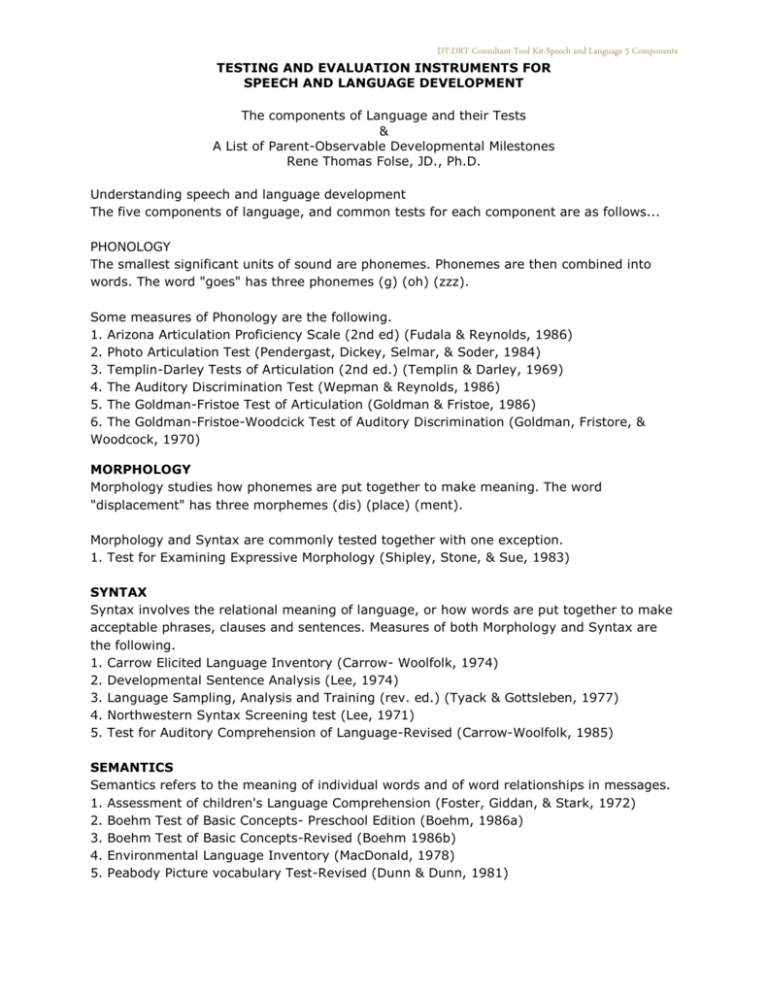
DT:DRT Consultant-Tool Kit-Speech and Language 5 Components
TESTING AND EVALUATION INSTRUMENTS FOR
SPEECH AND LANGUAGE DEVELOPMENT
The components of Language and their Tests
&
A List of Parent-Observable Developmental Milestones
Rene Thomas Folse, JD., Ph.D.
Understanding speech and language development
The five components of language, and common tests for each component are as follows...
PHONOLOGY
The smallest significant units of sound are phonemes. Phonemes are then combined into
words. The word "goes" has three phonemes (g) (oh) (zzz).
Some measures of Phonology are the following.
1. Arizona Articulation Proficiency Scale (2nd ed) (Fudala & Reynolds, 1986)
2. Photo Articulation Test (Pendergast, Dickey, Selmar, & Soder, 1984)
3. Templin-Darley Tests of Articulation (2nd ed.) (Templin & Darley, 1969)
4. The Auditory Discrimination Test (Wepman & Reynolds, 1986)
5. The Goldman-Fristoe Test of Articulation (Goldman & Fristoe, 1986)
6. The Goldman-Fristoe-Woodcick Test of Auditory Discrimination (Goldman, Fristore, &
Woodcock, 1970)
MORPHOLOGY
Morphology studies how phonemes are put together to make meaning. The word
"displacement" has three morphemes (dis) (place) (ment).
Morphology and Syntax are commonly tested together with one exception.
1. Test for Examining Expressive Morphology (Shipley, Stone, & Sue, 1983)
SYNTAX
Syntax involves the relational meaning of language, or how words are put together to make
acceptable phrases, clauses and sentences. Measures of both Morphology and Syntax are
the following.
1. Carrow Elicited Language Inventory (Carrow- Woolfolk, 1974)
2. Developmental Sentence Analysis (Lee, 1974)
3. Language Sampling, Analysis and Training (rev. ed.) (Tyack & Gottsleben, 1977)
4. Northwestern Syntax Screening test (Lee, 1971)
5. Test for Auditory Comprehension of Language-Revised (Carrow-Woolfolk, 1985)
SEMANTICS
Semantics refers to the meaning of individual words and of word relationships in messages.
1. Assessment of children's Language Comprehension (Foster, Giddan, & Stark, 1972)
2. Boehm Test of Basic Concepts- Preschool Edition (Boehm, 1986a)
3. Boehm Test of Basic Concepts-Revised (Boehm 1986b)
4. Environmental Language Inventory (MacDonald, 1978)
5. Peabody Picture vocabulary Test-Revised (Dunn & Dunn, 1981)
DT:DRT Consultant-Tool Kit-Speech and Language 5 Components
PRAGMATICS
Pragmatics refers to the use of language within the communicative context. It is possible to
have all the necessary skills in phonology, morphology, syntax and semantics and yet still
have difficulty communicating with others.
1. Let's Talk Inventory for Children (Bray & Wiig, 1987)
2. Test of Pragmatic language (Phelps-Terasaki & Phelps-Gunn, 1992)
3. Test of Pragmatic Skills (rev. ed.) (Shulman, 1986)
COMPREHENSIVE GENERAL SURVEY
MEASURES OF ORAL LANGUAGE
These measures assess a wide range of language skills.
1. Bankson Language Test (2nd ed.) Bankson, 1990)
2. BRIGANCE Diagnostic Inventory of early Development-Revised (Brigance 1991)
3. Clinical Evaluation of Language Fundamentals-Revised (Semel, Wiig and Secord, 1987)
4. Illinois Test of Psycholinguistic Abilities (Kirk, McCarthy, & Kirk, 1968)
5. Test of Adolescent Language -2 (Hammill, Brown, Larsen, & Wiederholt, 1987)
6. Test of Early Language Development (2nd ed.) (Hresko, Reid, & Hammill, 1991)
7. Test of language Development-2 Intermediate (Hammill & Newcomer, 1988)
8. Utah Test of language Development (3rd. ed.) (Mecham, 1989)
9. Woodcock language Proficiency Battery Revised (Woodcock, 1991)
DEVELOPMENTAL MILESTONES
These milestones are observable by parents without formal assessment.
Birth to 6 months
1. First form of communication is crying
2. Babies also make sounds of comfort, suchas coos and gurgles.
3. Babbling soon follows as a form of communication.
4. Vowel sounds are produced.
5. No meaning is attached to the words heard from others.
6 to 12 months
1. The baby's voice begins to rise and fall while making sounds.
2. Child begins to understand certain words.
3. Child may respond appropriately to the word "no" or own name.
4. Child may perform an action when asked.
5. Child may repeat words said by others.
12 to 18 months.
1. Child has learned to say several words with appropriate meaning.
2. Child is able to tell what he or she wants by pointing.
3. Child responds to simple commands.
18 to 24 months
1. There is a great spurt in the acquisition and use of speech as this stage.
2. Child begins to combine words.
3. Child begins to form words into short sentences.
2 to 3 years.
1. At this age the child talks.
2. Child asks questions.
3. Child has vocabulary of about 900 words.
4. Child participates in conversation.
DT:DRT Consultant-Tool Kit-Speech and Language 5 Components
5.
6.
7.
8.
Child
Child
Child
Child
can identify colors.
can use plurals.
can tell simple stories.
begins to use some consonant sounds.
3 to 4 years.
1. Child begins to speak more rapidly.
2. Child begins to ask questions to obtain information
3. Sentences are longer and more varied.
4. Child can complete simple analogies.
4 to 5 years.
1. Child has an average vocabulary of over 1500 words.
2. Child's sentences average 5 words in length.
3. Child is able to modify speech.
4. Child is able to define words.
5. Child can use conjunctions
6. Child can recite poems and sing songs from memory.
The author of this article has released it as "public domain" for which a copyright is
unnecessary. OPU thanks Ms Folse for her kind contribution. She may be contacted at the
addresses below.
Rene Thomas Folse, JD, Ph.D.
Attorney at Law (#61144) - Licensed Psychologist (#PSY11415)
Maxi Net Services
101 Moody Court, Thousand Oaks, CA, USA 91361
(805) 497-0857 Ex. 104
Rene Thomas Folse <rene@maxi.net>
http://www.childpsychology.com/
© Copyright 1999 Oregon Parents United Unless Otherwise Noted
All Rights Reserved
http://www.oregonparentsunited.com/article10.htm


